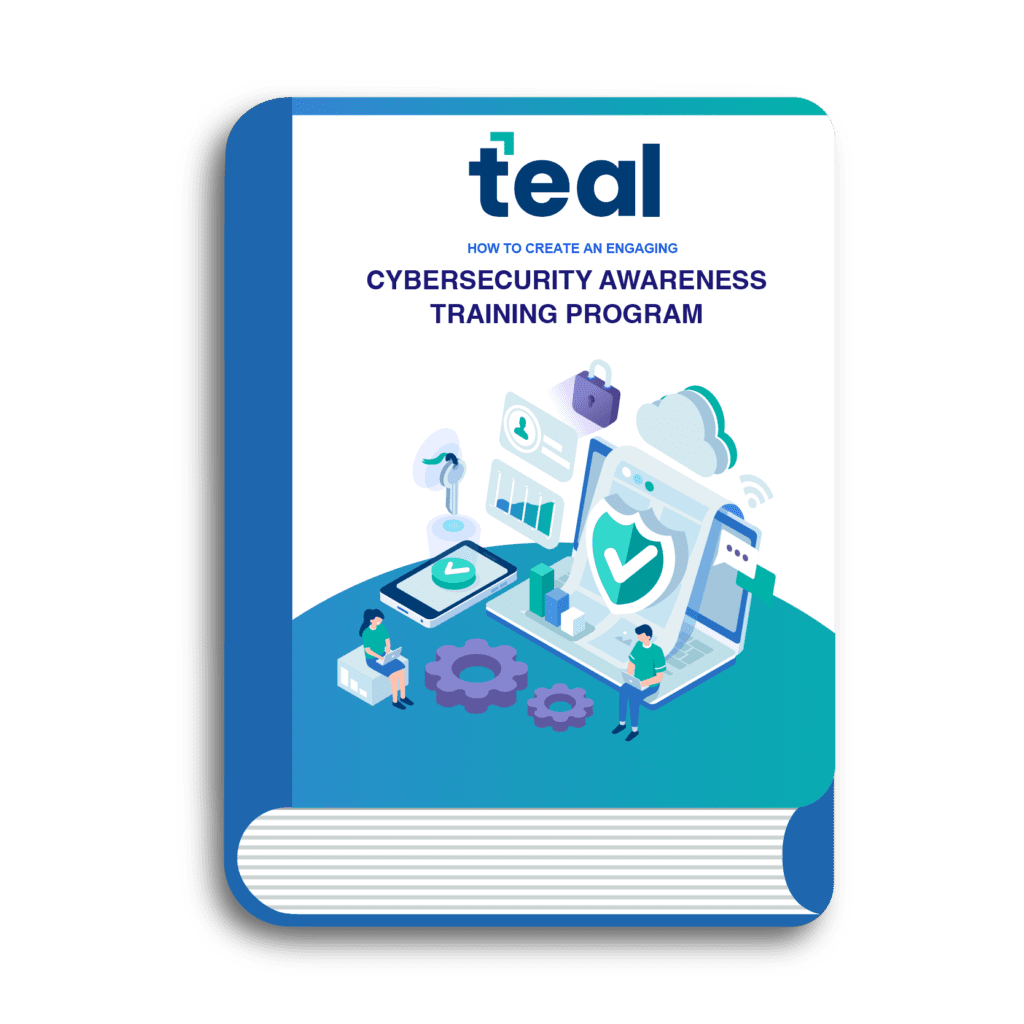Ah, computer hacking. It’s a big topic. However, having a basic understanding of the different types of hackers is essential to strengthening your small business’s security.
In this article, we’ll explore:
- The different types of hackers.
- Their motivations.
- The tactics they employ.
This article is the first in a series to help you and your leadership team protect your organization. It provides the most up-to-date information and strategies. Ready to create a more resilient business?
Let’s dive in!
Watch Now
Table of Contents
In a hurry? Take these insights with you in our complete guide.

Enhance your defenses from sophisticated cyber threats with expert strategies from a trusted managed service provider. Download now.
3 Types of Hackers
So, generally speaking, who is a hacker? A hacker tends to be someone who is deeply curious, knowledgeable, and skilled in technology.
The key characteristic is their ability to navigate and manipulate complex digital environments – often thinking outside the box to find solutions or exploit weaknesses.
In the cybersecurity realm, hackers are often classified into three types – white hat, grey hat, and black hat. Recognizing these types can help your small business make more informed decisions about your cybersecurity strategies.
Let’s take a look at each one.
1. White Hat Hackers
A white hat hacker is a security expert committed to ethical hacking practices. They gain consent from organizations to help them find and fix their issues, including finding vulnerabilities in:
- Computer systems
- Software
- Networks
Ethical hackers use a variety of tools and methods to simulate real-world cyberattacks on computer networks. In doing so, they can evaluate the system’s security posture and prevent unauthorized access.
White hats help your organization maintain compliance, customer trust, and proactive defense against the latest threats (among other benefits). They can demonstrate their dedication to ethical practices by getting certifications like Offensive Security Certified Professional (OSCP).
As a business owner, you’ll generally encounter ethical hackers when you partner with a managed IT service provider.

Famous Ethical Hackers
The most famous hacker was Kevin Mitnick. He got his start as an illegal hacker. However, after serving five years in prison for his exploits, Mitnick decided to become an ethical hacker.
As a result, he became a highly sought-after security consultant, speaker, and author until his passing on July 16, 2023.
Other top ethical hackers include:
- Katie Moussou
- Sabrien Symington
- Joanna Rutkowska
- Mikko Hyppönen
2. Gray Hat Hackers
Dubbed as “Hacktivists,” grey hat hackers are somewhat paradoxes. They are often driven by ideology, rather than with malicious intentions.
Sometimes, they hack for a cause. Others for personal gain. However, it’s always rooted in the murky waters of legality.
The actions of gray hat hackers can vary widely depending on the individual’s principles and goals. Some may lean more towards ethical practices akin to white hat hackers, while others may veer closer to the more dangerous tactics of black hats.

Gray hat hacker, Khalil Shreateh, hacked the Facebook page of founder
Mark Zuckerberg in 2013.
The actions of grey hats boil down to some truths:
- Their actions are not entirely benign or legally compliant.
- They may choose to exploit vulnerabilities they find for personal gain.
- Gray hat hacking can damage the reputation of the hacker and their target organization.
- They may disclose their target’s weaknesses to them (or even the public or Dark Web).
3. Black Hat Hackers
Black hat hackers are the people we typically think of when we talk about hackers and cybercrime. You’ll often hear us refer to them as cybercriminals, bad actors, or simply hackers. Since these hackers are our focus, let’s dive deep into their motivations.
How Black Hat Hackers Operate
It’s crucial to acknowledge the diverse motivations driving bad actors, which small business leaders often underestimate. These misconceptions about cybercrime aren’t just oversights. They represent significant blind spots in your defense strategies.
So, it’s imperative to dismantle these myths and understand the real threats that hackers pose to the integrity of small businesses. We’ll start by looking at what motivates cybercriminals.
6 Hacker Motivations
1. Financial Gain
One of the most well-known motivators for cybercriminals is financial gain - which they often achieve through tactics like ransomware.
2. Data Harvesting
Another hacker motivation is to steal personal, financial, or business data to sell on the dark web or use in identity theft and fraud.

Download a free copy of your guide today to learn about the Dark Web and how to protect your small business.
3. Business Espionage
Cybercriminals may engage in illegal activities specifically aimed at competitors to steal proprietary information, customer data, or internal strategies.
4. Cyber Vandalism
Some hackers are motivated by the desire to disrupt or damage a business’s reputation. They may do this out of spite or for ideological reasons.
5. Challenge and Notoriety
The thrill of breaking into secure networks and gaining prestige among peers in the hacker community can be a significant motivating factor.
6. Political or Social Causes
Hacktivists (our grey hat hackers) may engage in cybercrime to advance political, social, or environmental causes.
9 Cybercrime Misconceptions in Small Businesses
1. “Small Businesses Aren’t Targets”
Unfortunately, many small business leaders mistakenly believe that their businesses are too small to be targeted. The truth is that your small business is often seen as an easy target due to weaker security measures and, therefore, quite valuable.
2. “Basic Security is Enough”
Many business leaders underestimate the complexity of modern cyber threats. This belief leads to poor cybersecurity measures and no (or subpar) monitoring. Some hackers rely on simple, easily obtainable methods (e.g., attacks exploiting basic security lapses like weak passwords or unpatched software).
However, many hackers fall into the category you see on TV. Not the shadowy people typing mercilessly at a keyboard to hack their targets, but hackers that launch sophisticated attacks requiring advanced cybersecurity.
3. “It’s Only About Financial Theft”
While financial gain is a significant motivator, bad actors may also try to disrupt operations, damage reputations, or steal data for espionage.
4. “All Hackers Are Anonymous Outsiders”
Not all threats come from anonymous external attackers. Insider threats, whether intentional or accidental, can also be significant.
5. “Once Protected, Always Safe”
Believing that a one-time investment in cybersecurity is sufficient is a dangerous (and expensive) mistake to make. One cyberattack can cost you your business. The reality is that cyber threats are evolving constantly. This means that your organization requires continuous updates and proactive monitoring.
6. “Cybersecurity is Solely IT’s Responsibility”
Unfortunately, this belief overlooks the importance of a culture of security awareness among all employees.
From business email compromise attacks to baiting, your employees are always just one step away from being manipulated into divulging confidential information or performing an action that compromises security.

Learn how to implement an engaging and successful cybersecurity awareness training program.
7. "Cyber Insurance is Enough to Protect Our Business"
Relying solely on cyber liability insurance without adequate security measures is a recipe for disaster. To mitigate your business’s risk, you need to have a multi-layered approach to cybersecurity.
8. "Our IT Team Has it Covered"
Being over-reliant on the IT you have can cause issues down the line when an attack happens. While IT professionals are skilled in many areas, cybersecurity threats often require specialized expertise.
Cyber threats are evolving rapidly, and keeping up requires dedicated focus and training in cybersecurity. Without this specialization, even competent IT teams may not be equipped to identify and mitigate sophisticated cyber attacks.
9. "Cybersecurity is Too Expensive"
Getting your small business set up with effective cybersecurity measures may seem out of reach, but it’s not. What you likely lack is expertise and an effective strategy.
There are three routes you can take to make strengthening your cybersecurity more affordable:
- Rollout the foundational security measures in order of importance slowly over time;
- Outsource your IT to a managed service provider for a fraction of the cost of an in-house team;
- Outsource your cybersecurity to a managed service provider in a co-managed IT capacity (where your internal team focuses on your daily ops, and the provider delivers your security).
Hacker Tactics
Hackers use a few tactics to reach their goals, including exploiting human emotions, employing a technical approach, or using more advanced techniques. Let’s take a look at each.
1. Exploiting Human Psychology
Hackers don’t just rely on technical tactics to breach your security. They often exploit our emotions to achieve their objectives. They toy with your emotions to manipulate you into doing things you otherwise wouldn’t – like divulging sensitive information.
According to Verizon, the human element is involved in 74% of total breaches.
These attacks remain a top concern amongst IT professionals. And for good reason. Not only are they effective, but there are a large variety of tactics that hackers employ, including:
- Tailgating
- Pretexting
- Whaling
- Baiting
- Quid Pro Quo
- Phishing
- Scareware
- Vishing
- Smishing
Social engineering is also entering a new era where AI-enhanced attacks will become more difficult to identify – making resilience against them more important than ever.

Strengthen your organization’s defenses against advanced cyberattacks, like ransomware, by elevating phishing awareness with these expert tips and actionable insights.
2. Technical Tactics
On the technical front, cybercriminals use methods like exploiting software security vulnerabilities, intercepting insecure communications, and attacking network infrastructure.
As a part of their toolkit, they may deploy malware. Malware is mostly used to infiltrate and damage systems, steal data, or gain unauthorized access. You’re probably familiar with some of these malwares:
- Viruses
- Worms
- Trojans
- Spyware
- Adware
They may also deploy Denial-of-Service (DoS) or distributed denial of service (DDoS) attacks. These attacks attempt to overwhelm targeted systems or networks.
3. Advanced Techniques
Advanced hacker techniques may include:
- Sophisticated phishing campaigns
- Exploiting zero-day vulnerabilities
- Using custom malware
- Man-in-the-Middle (MitM) attacks
- Advanced Persistent Threats (APTs)
- Cross-Site Scripting (XSS)
- Social Engineering at Scale
- Ransomware Attacks
Verizon’s 2023 DBIR reports that ransomware was present in 24% of breaches and was identified as one of the three most common types of security incidents.
These varied approaches really highlight the multifaceted nature of cyber threats – where technical expertise and human psychology intertwine to create these complex security challenges for small businesses.
Build a Prepared Business with Proactive Strategies
As we wrap up our exploration of the multifaceted world of hackers and cybersecurity, it’s important to recognize the diversity of threats your business faces.
Understanding the differences between white hat, gray hat, and black hat hackers is more than an exercise in terminology; it’s a step in understanding the motivations and methodologies that define the cyber landscape your business operates in.
And the key to effective cybersecurity lies in understanding these motivations and the tactics employed by hackers. This knowledge empowers you to build a proactive business strategy.
Because cybersecurity is an ever-evolving battlefield – requiring continuous vigilance, adaptation, and education.
Whether you’re fortifying your defenses against the deceptive tactics of black hat hackers or harnessing the expertise of white hats, remember that knowledge is your most powerful tool.
Check out the next article in this series where we take a look at the lessons you can learn from historical cyberattacks.











